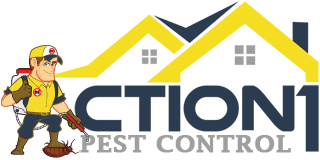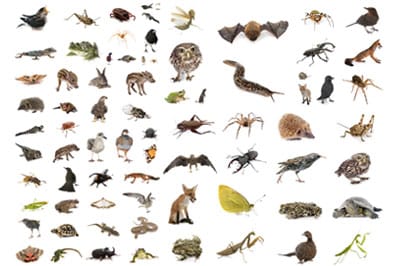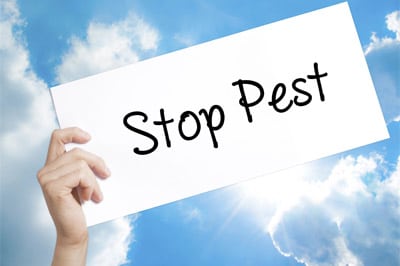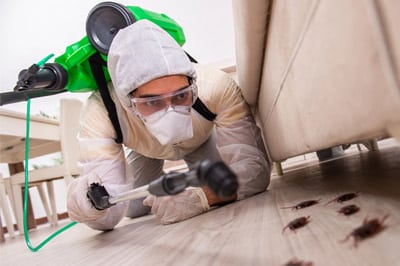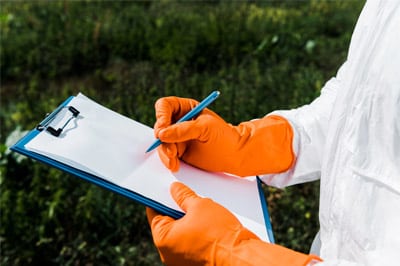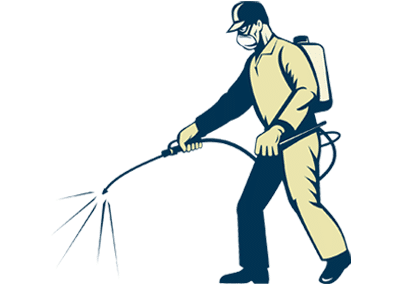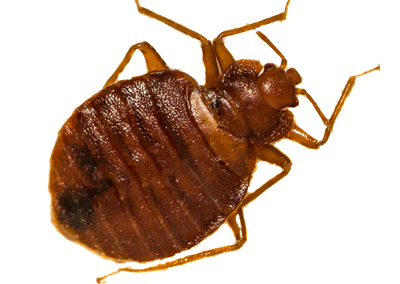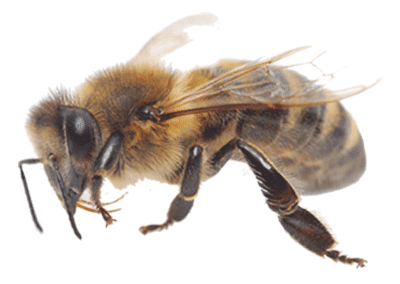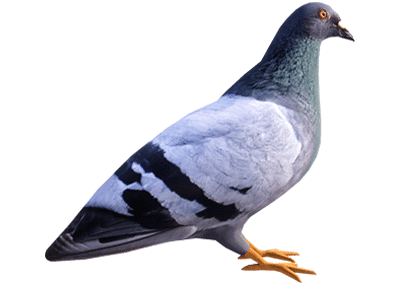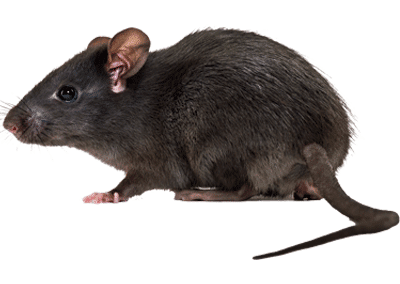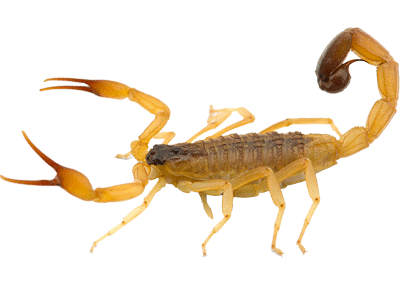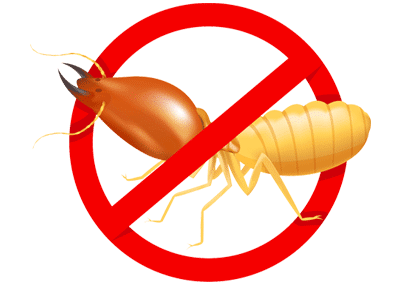What Pest Control Service Can We Help You With?
Call Us Today- Home
- »
- Pest Control
Effective pest control requires understanding the specific threats we face, implementing targeted treatments, and maintaining consistent prevention strategies. We’ll explore how different pest species behave, what attracts them to our properties, and the most reliable methods for eliminating current infestations while preventing future ones.
Whether we’re dealing with a current pest problem or looking to protect our property proactively, the right approach combines immediate action with long-term prevention.
What is Pest Control?
Pest control is the practice of managing and regulating undesirable organisms that pose threats to our health, property, and environment. These organisms include insects, rodents, birds, fungi, and weeds that can cause significant damage or health risks.
The primary objective focuses on mitigating negative impacts rather than complete elimination. We achieve this through Integrated Pest Management (IPM), which combines multiple control methods for maximum effectiveness.
IPM incorporates five key elements:
- Prevention through cultural and physical controls
- Accurate identification of pest species and damage patterns
- Monitoring to track pest populations and activity levels
- Setting thresholds to determine when action is necessary
- Taking action using biological, chemical, or combination approaches
This approach minimizes risks to people, pets, and the environment while managing pest damage through economical means. We rarely need to eliminate pests completely, as plants and animals often tolerate certain pest levels better than expected.
Our 5 Step Pest Control Process
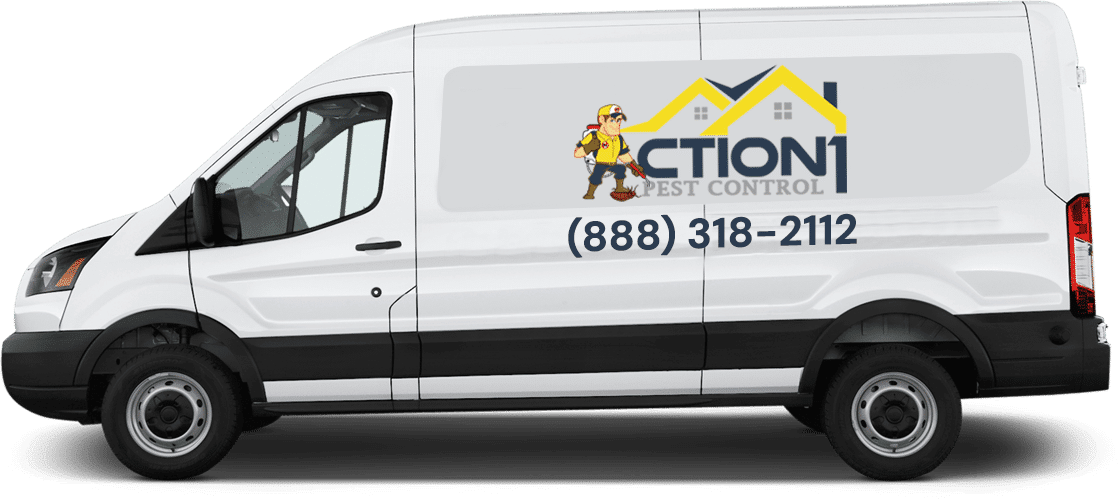
How Pest Infestations Start
Entry points play a crucial role in infestation development:
- Cracks and gaps in building foundations
- Unsealed doors and windows
- Damaged screens or vents
- Plumbing and utility penetrations
Environmental factors that encourage pest problems include:
- Excess moisture from leaks or poor drainage
- Food debris and improper storage
- Cluttered areas providing shelter
- Overgrown vegetation near structures
Seasonal changes often trigger pest activity as insects and rodents seek shelter, food, or breeding sites. Weather conditions like drought or excessive rainfall can drive pests indoors.
Many pest problems start small and grow rapidly under favorable conditions. Early detection prevents minor issues from becoming major infestations requiring extensive treatment.
Types of Pest Problems
We encounter three main categories of pest problems based on the organisms involved and the threats they pose to our health and property.
Structural pests damage buildings and belongings:
- Termites destroy wooden structures
- Carpenter ants excavate wood for nesting
- Rodents chew wiring and insulation
- Cockroaches contaminate surfaces and food
Health-threatening pests transmit diseases or cause allergic reactions:
- Mosquitoes carry viruses and parasites
- Ticks spread bacterial infections
- Fleas cause skin irritation and disease transmission
- Stored product pests contaminate food supplies
Agricultural pests impact food production and landscaping:
- Aphids damage crops and ornamental plants
- Weeds compete with desired vegetation
- Fungal pathogens cause plant diseases
- Vertebrate pests consume or damage crops
Each pest problem requires specific identification and management strategies. Understanding the pest’s biology, behavior, and life cycle helps us select the most effective control methods while minimizing environmental impact.
Identifying and Managing Common Pests
Ants: Detection and Elimination
We identify ant infestations by following their trails to locate entry points and nests. Common species include carpenter ants, which create wood damage, and sugar ants that target food sources.
Detection Signs:
- Visible trails along walls or counters
- Small piles of sawdust (carpenter ants)
- Food contamination in kitchens
Elimination Methods:
- Place bait stations near ant trails
- Seal cracks and crevices with caulk
- Remove food sources and clean spills immediately
Liquid ant baits work best for sweet-feeding species. Protein-based baits target grease ants more effectively.
We recommend treating the colony source rather than individual ants. Surface sprays often scatter colonies and worsen infestations.Rodent control begins with identifying mouse versus rat activity through droppings size and location. Mice leave small, pointed droppings while rats produce larger, blunt-ended waste.
Control Strategies:
- Snap traps: Most effective for immediate results
- Bait stations: Safer around children and pets
- Exclusion: Seal holes smaller than a quarter inch
We place traps along walls where rodents travel. Peanut butter and dried fruit make excellent baits.
Rodents reproduce rapidly, so we address infestations immediately. A single pair of mice can produce 35 offspring annually.
Sanitation prevents rodent attraction. We store food in sealed containers and eliminate water sources like leaky pipes.
Dealing with Spiders and Wasps
Spider management focuses on reducing their food sources and hiding places. Most house spiders are harmless, but we identify dangerous species like black widows and brown recluses.
Spider Control:
- Vacuum webs and egg sacs regularly
- Reduce outdoor lighting that attracts prey insects
- Seal entry points around windows and doors
Wasp control requires different timing and methods. We locate nests during daylight but treat them at dusk when wasps are less active.
Wasp Management:
- Apply insecticide sprays directly to nests
- Remove food sources like fallen fruit
- Seal garbage cans tightly
We wear protective clothing when treating wasp nests. Professional removal may be necessary for large colonies or hard-to-reach locations.
Both spiders and wasps benefit from habitat modification rather than chemical treatments alone.
Cockroaches: Detection and Elimination
Signs of a Cockroach Infestation:
- Droppings that look like black pepper or coffee grounds
- Musty or oily odor
- Egg casings (small, brown capsules)
- Live cockroaches seen at night or during the day (in large infestations)
Steps to Deal with Cockroaches:
- Clean Thoroughly – Wipe down surfaces, vacuum floors, and remove crumbs or food debris.
- Eliminate Water Sources – Fix leaks and avoid leaving standing water in sinks or pet bowls overnight.
- Seal Entry Points – Close gaps and cracks around baseboards, doors, windows, and pipes.
- Remove Hiding Spots – Get rid of clutter, especially cardboard and paper.
- Use Treatments – Place bait stations, use cockroach gel, or apply insecticide sprays in affected areas.
- Call us – If the infestation persists, contact Action 1 Pest Control.
- Store food in sealed containers.
- Take out the trash regularly.
- Keep kitchen and bathroom areas dry and clean.
Prevention Tips:
Scorpions: Detection and Elimination
Signs of a Scorpion Problem:
- Live sightings, especially at night
- Scorpions found in shoes, sinks, tubs, or under furniture
- Activity in basements, garages, or near water sources
Steps to Eliminate Scorpions:
- Seal Entry Points – Block cracks, door gaps, windows, and vents to prevent access.
- Remove Hiding Places – Clear clutter, especially in dark areas like closets, garages, and storage boxes.
- Eliminate Moisture – Fix leaks and remove standing water to reduce attraction.
- Use Traps – Place sticky traps in suspected activity zones to monitor and reduce their presence.
- Apply Insecticides – Use scorpion-specific sprays around the home’s perimeter and entry points.
- Hire Action 1 Pest Control– For ongoing issues, our pest control specialists can implement a more aggressive treatment plan.
Scorpion Prevention Tips:
- Keep shoes, towels, and clothing off the floor.
- Install door sweeps and weather stripping.
- Trim vegetation away from the house and remove yard debris.
Professional Pest Control Services
Benefits of Using Our Experts
Our licensed technicians use commercial-grade products unavailable to consumers. These treatments provide longer-lasting results and target pests at their source rather than just visible symptoms.
Safety expertise protects your family and pets during treatment. Professionals know proper application techniques, protective equipment requirements, and which products work safely around children and animals.
Our local teams offer service guarantees. If pests return between scheduled treatments, technicians will retreat your property at no additional cost.
Professional services save money long-term by preventing recurring infestations. Early intervention stops small problems from becoming expensive structural damage or health hazards.
What to Expect from a Pest Control Visit
Treatment application follows the inspection. We apply targeted treatments to affected areas using integrated pest management techniques that combine chemical and non-chemical methods.
Our Technicians explain their findings and treatment plan during the visit. We receive documentation of services performed and recommendations for preventing future infestations.
Follow-up scheduling establishes ongoing protection. Most residential customers receive quarterly or tri-annual treatments based on local pest pressure and seasonal activity patterns.
Emergency callbacks provide additional protection between scheduled visits. We typically respond within 24 hours for urgent pest issues covered under your service plan.
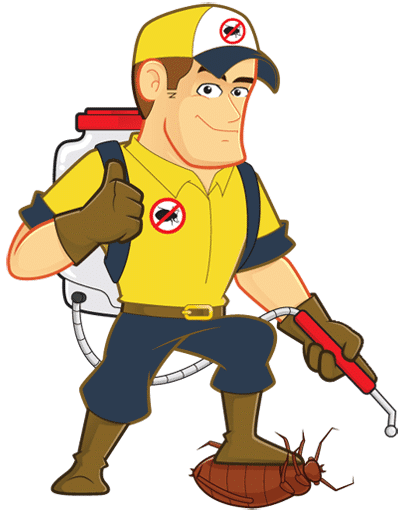
How the Action 1 Pest Control Team Can Help You With the Right Choices
Our contractors we work with at Action 1 Pest Control are some of the best in the area. We have experience working with over 50 common pests that you may deal with throughout the year. We offer our customers next day and Saturday appointments. We use pet and people friendly pest solutions, which are designed for both inside and outside your home. You will get an affordable pest control service that you can count on each month.
Our pest management programs are designed with taking care of the potential problems, not just treating the symptoms.
Our Pest Control Specialties
At Action 1 Pest Control, we offer our customers a full suite of extermination services. Our team has the experience, knowledge, and expertise to recommend and provide the following services at an affordable price.

